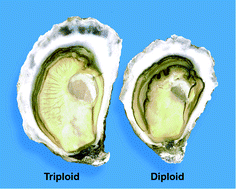The use of the oyster Saccostrea glomerata as a biomonitor of trace metal contamination: intra-sample, local scale and temporal variability and its implications for biomonitoring
Abstract
Cu, Cd, Zn, Pb and Se concentrations were measured in the bivalve mollusc Saccostrea glomerata (Iredale and Roughly) from two uncontaminated locations, Clyde River Estuary, Batemans Bay and Moona Moona Creek, Jervis Bay, to determine natural variability of metals associated with mass, gender, age, tissue type and site within location. Trace metals were also measured in the Clyde River Estuary over an 11 year period and in five other NSW estuaries (Hastings River, Hunter River, Georges River, Tillgerry Creek and Lake Pambula) over a 13-month period to determine temporal variability and if diploid and triploid oysters accumulate trace metals differently. There were few significant relationships between trace metal concentrations and mass and no significant differences in trace metal concentrations between female and male oysters. Younger oysters (1.3 years) had significantly higher copper concentrations and higher trace metal variability than mature oysters (3 years). Different tissues have different trace metal concentrations with muscle tissues having lower concentrations. Considerable inherent variability occurs in oyster cohorts. Analysing specific tissues did not reduce variability of trace metal concentrations. Comparison of trace metal concentrations at two sites within the Clyde Estuary showed a significant difference in zinc concentrations. Cu, Cd, Zn and Se concentrations were generally higher and less variable in triploids than diploids. Pb had a variable pattern of accumulation with no consistent elevation in diploids or triploids. Inter annual variability of trace metal concentrations was considerable and trace metal concentrations also fluctuated throughout an annual cycle with no clear seasonal trends. Measurement of trace metals at known contaminated locations showed that Saccostrea glomerata accumulates metals in response to contamination. Saccostrea glomerata meet most of the requirements to be a biomonitor of trace metal contamination as they are abundant, sessile/sedentary, easy to identify, provide sufficient tissue for analysis, and accumulate trace metals in response to contamination. However, as trace metal concentrations can vary with mass, age, estuary position, ploidy type and temporally, care must be taken to collect individual organisms of similar mass, age and ploidy type to minimise variability, and from similar consistent positions and times to allow for seasonal changes in environmental conditions. Trace metal concentration variability is higher in young animals, thus to reduce variability, older mature animals could be selected. However, with immature oysters there are no complications because of the effects of spawning i.e. sudden loss of trace metals or body mass.


 Please wait while we load your content...
Please wait while we load your content...